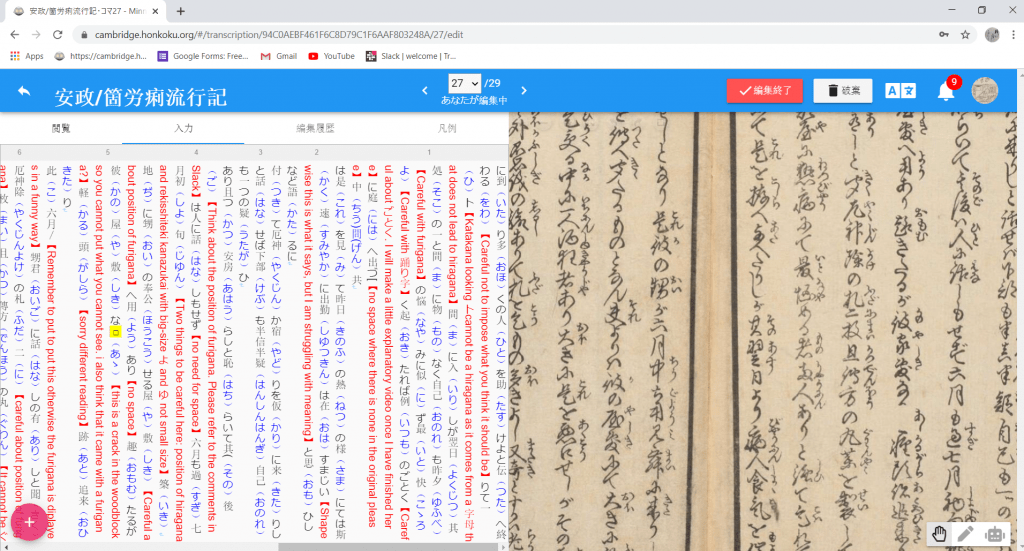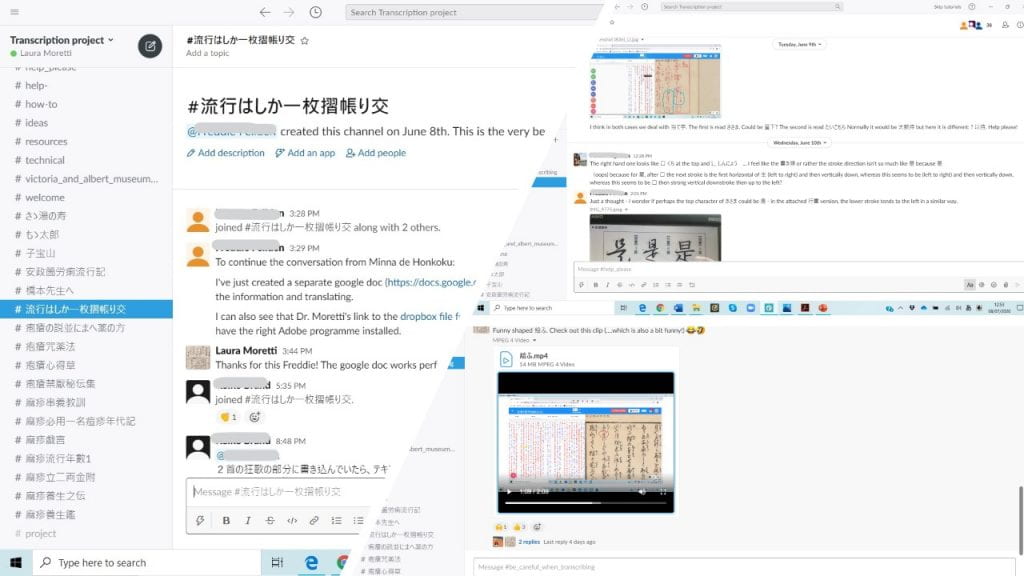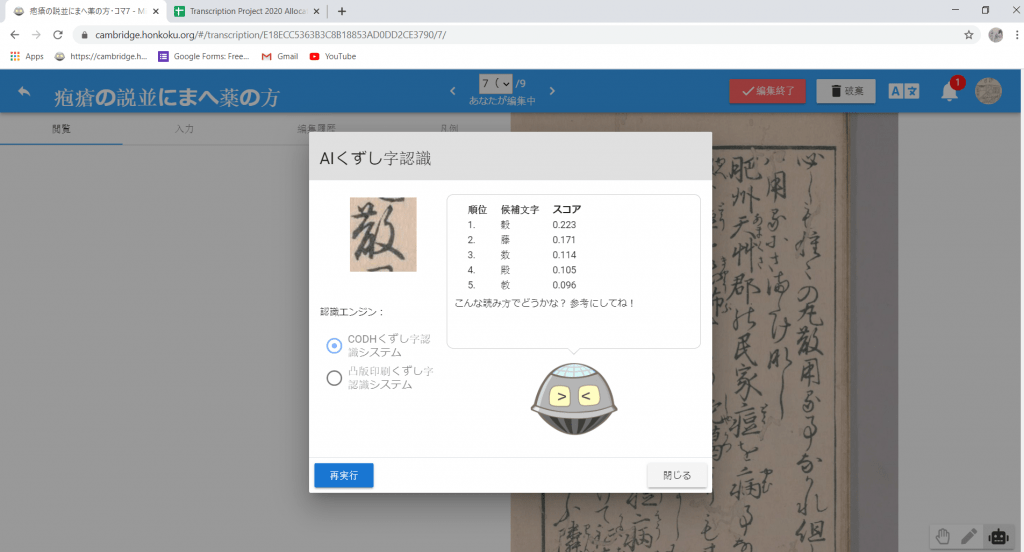This is third of a multi-part series on overcoming disruptions to teaching languages by seizing upon an opportunity to study the history of pandemics. Part I by Yuta Hashimoto is available in Japanese and English. This Teaching Moments series is co-presented by the MPIWG History of Science ON CALL project and the Teach311 + COVID-19 Collective.
Rethinking teaching
Here we are with a resourceful online platform, quirky but demanding early modern texts, and thirty-five ultra-enthusiastic participants. All was set for work to start on the 1st of June 2020. With a view to accommodate different academic calendars, we decided that the project would run for five months until the end of October 2020. After the first week, it was clear that I needed to do some serious rethinking on how to turn this new adventure into a rewarding experience for both myself and those who joined to learn.
The online platform we are using is designed with speed of transcribing in mind. I log in, I choose what to transcribe and, once I have finished my work, the system tells me how many characters I have transcribed so far. In the first version of the platform that Prof Hashimoto set up for us, there was even a ranking chart of who transcribed the most. This might prove an asset for the main page of Minna de honkoku (fig. 6) where there are nine different big-scale projects ongoing simultaneously and more than 900 people involved. Seeing your name up in the league table pushes you to transcribe more and thus retain your place of pride. This, in turn, allows for these projects to be completed in a timely manner. But speed, as an important skill as it is (we are all under immense pressure to finish work within the deadline!), plays havoc with a key feature of the work entailed in transcribing texts, namely accuracy. How could I ensure that the participants did not rush their transcriptions through just to be top of the ranking? It was clear that this was happening. Prof Hashimoto was prompt enough to dispense of the ranking on the platform and I communicated to the participants stressing how “getting the meaning” when transcribing is crucial to ensure that our transcriptions are correct, and therefore can be safely used by scholars and readers who have no access to the original. But “getting the meaning” is a time-consuming process: you decode the original, produce a preliminary transcription, and then make use of all the dictionaries at your disposal to make sure that the meaning is correct. For a language like Japanese that uses a high number of logographic characters and that is characterizes by many homophones, grasping the precise meaning of a word or a sentence can be quite a taxing and lengthy process. Speed is necessary to complete the project, but accuracy is essential to make the completed project trustworthy.

When thinking on how to promote accuracy I also had to juggle two aspects of the learning process: peer mentoring, which is naturally encouraged by a crowdsourcing platform like Minna de honkoku, and feedback provided by the instructor. As teachers, it is difficult to let it go. I, for one, like to be on top of the guidance that each of my students receives. But the platform is not designed to provide participants with detailed comments. Right now, the comments can only be entered in the middle of the vertical space, resulting in a rather crowded and visually challenging page (fig. 7). While Prof Hashimoto is investigating ways to amend this, the participants are showing an impressive willingness to be understanding and flexible. It does not matter whether they must crick their neck to read: they are happy with what they are learning. Adaptability and resilience: studying amidst the Covid-19 teaches us these virtues. On my part, I am learning to be more courageous in empowering my students and allowing them to be teaching each other. Relying on others can be tough, but once again this is something that we have been learning throughout lockdown: those who shielded had to depend on others for all sorts of daily chores. Our project is not too different. We all work alone in front of our laptop, but we are learning to ask for help and to offer assistance when necessary.

Creating a learning environment where mutual support is vital can be challenging when using a platform that has no embedded forum. Communication, however, is a precondition for the creation of an efficient team. Following the advice of some of the participants, we started using Slack after a couple of weeks. It did take some time for everyone to get used to make the most of this virtual working space. But now we have several interesting conversations happening on different channels: asking help for bits one cannot read, sharing documents where contributions are necessary, embedding tutorials in the form of video-clips, and much more (fig. 8).

While we are shaping a close-knit intellectual community by making the most of a plurality of online tools, we have not given up on more traditional human interactions. I have set up monthly synchronous gatherings on Zoom. The first took place on the 27th of June and was quite revealing. By “meeting” face-to-face, albeit through a screen, a number of participants now feel more comfortable at communicating with each other. Slack discussions have livened up considerably, some have decided to work in pairs or in groups on a specific text, and those who live in the same city are even discussing the possibility to meet up in person! Covid-19 might have forced teaching to be relocated online, but this does not mean that we are altogether ready to dispense with human interactions. Working remotely leads us to discover new ways of teaching and to shape networks, but, perhaps rather counter-intuitively, it also enables us to re-discover the beauty of more traditional interactions. Videos are also a form of communication that I am exploring to complement the other facets of the project. Edited by one of my former students, Ms. Tessa Rizzoli, these videos are built around interviews with colleagues who have made this project possible or scholars who are using similar materials to produce cutting-edge research.
It should be clear at this juncture that “collaboration” is at the very heart of this project. AI is also a player. Minna de honkoku makes use of the research conducted by Center for Open Data in the Humanities (CODH) and Toppan Printing Co., Ltd. on the automated recognition of the Japanese cursive script. This means that the platform we are using provides us with reading hints about how to decode signs that we find hard to decipher. All becomes some sort of thrilling detective work. If I am stuck on a bit I cannot read, I can use the AI button to give me clues (fig. 9). Then it is down to me to check each clue and decide which one makes sense. But my role does not end there. But deciding how to transcribe a specific shape, I help feeding the databases that allow AI to work in the first place and participate in teaching AI, thus leading to its better performance in the long term.

Originally thought of as a substitute to the seventh Summer School in Japanese Early Modern Palaeography, the current transcription project brings humans and machines together, working in tandem for the advancement of the palaeographic skills needed to access premodern sources.
Laura Moretti is a Senior Lecturer in Pre-modern Japanese Studies at the University of Cambridge and Fellow at Emmanuel College. Her research focuses on early modern popular prose; the history of the commercially printed book; the interaction of text and images; and early modern paleography. Her publications include Recasting the Past. An Early-modern Tales of Ise for children (Leiden: Brill, 2016). Forthcoming in December 2020: Pleasure in Profit: Popular Prose in Seventeenth-Century Japan (New York: Columbia University Press).
Related:
Rethinking Normalcy :: Zheng Guan (United States)
Teaching the COVID-19 Pandemic on the Colorado Plateau :: Daniel Burton-Rose (United States)
* * *
The Teach311 + COVID-19 Collective began in 2011 as a joint project of the Forum for the History of Science in Asia and the Society for the History of Technology Asia Network and is currently expanded in collaboration with the Max Planck Institute for the History of Science (Artifacts, Action, Knowledge) and Nanyang Technological University-Singapore.
![[Teach311 + COVID-19] Collective](https://blogs.ntu.edu.sg/teach311/files/2020/04/Banner.jpg)